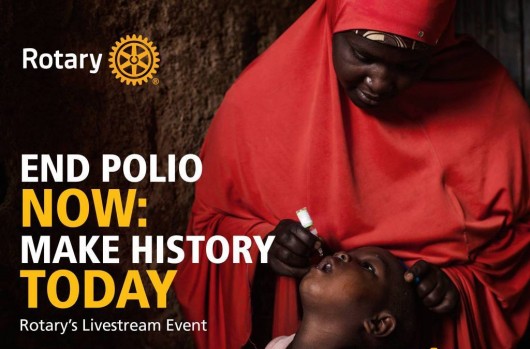Yesterday was Rotary’s World Polio Day, and the temptation to draw a comparison with Ebola is compelling. Both diseases at times sparked intensive public fear: polio in the 1950s and 1960s; Ebola only recently. Both diseases are killers; polio about 250 so far in 2014 (some 10,000 in 1960); Ebola about 4,000. Both diseases are linked to extreme poverty: polio currently resides in Afghanistan, Nigeria and Pakistan; Ebola in the West Africa nations of Guinea, Liberia and Sierra Leone. Both are deadly: polio killing about 15 percent of victims and Ebola some 40-50 percent. Both diseases have mobilized enormous international resources and cost the lives on people giving front-lines care. In March 2014, thirty-five health workers providing polio vaccination were tragically murdered in Pakistan by militants objecting to their efforts.
Polio and Ebola are also divergent in important ways. Polio is easily transmitted from person to person by contact with human waste and oral ingestion. Victims are often quite removed from the person carrying infection. Ebola, by contrast, requires intimate contact with bodily fluid and only those in very close proximity are at risk. Polio prevention is well-studied and vaccination effectiveness well-documented. Ebola prevention, by comparison, is in its infancy.
In the Polio vs Ebola analysis the most glaring contrast of all is that today it is well within our capability to eliminate polio, as decades of Rotary and WHO efforts demonstrate. An effective Ebola vaccine, or alternative prophylactic, will be years in development. In Polio vs Ebola the most relevant question is Will we take advantage of the technology we already possess to obliterate a disease we already know very well?

